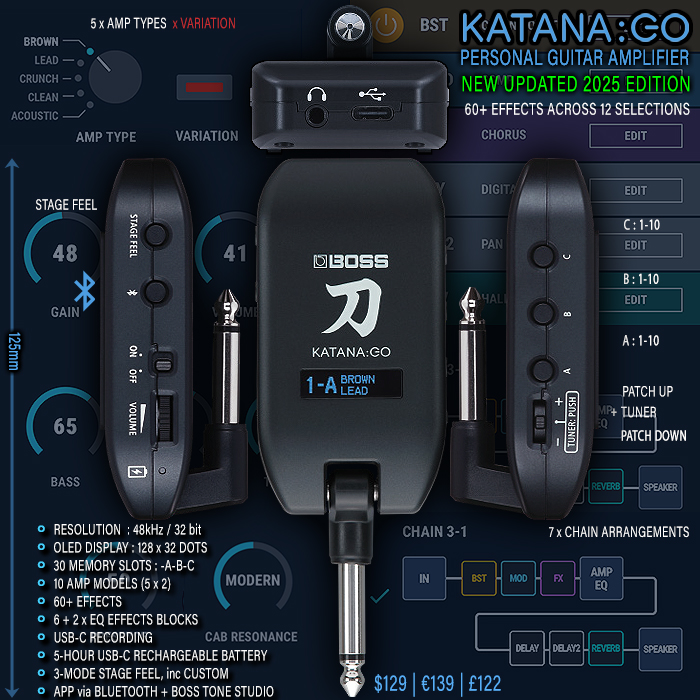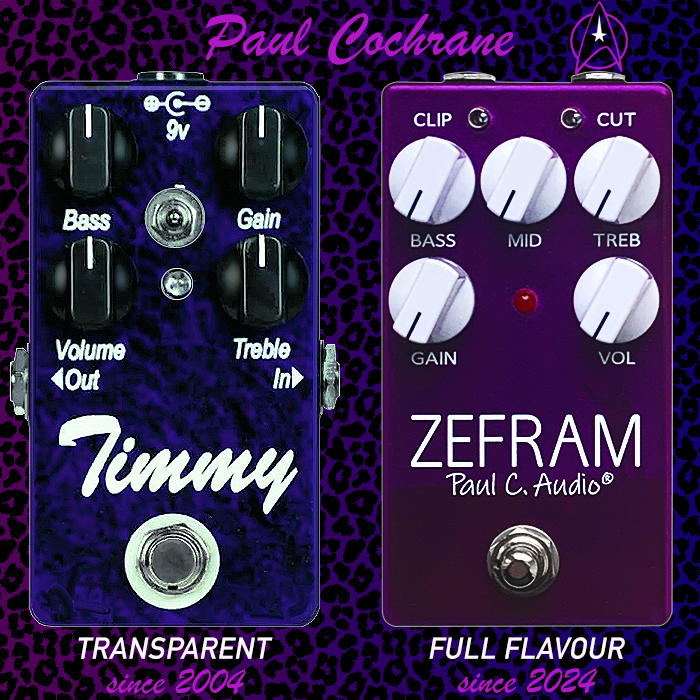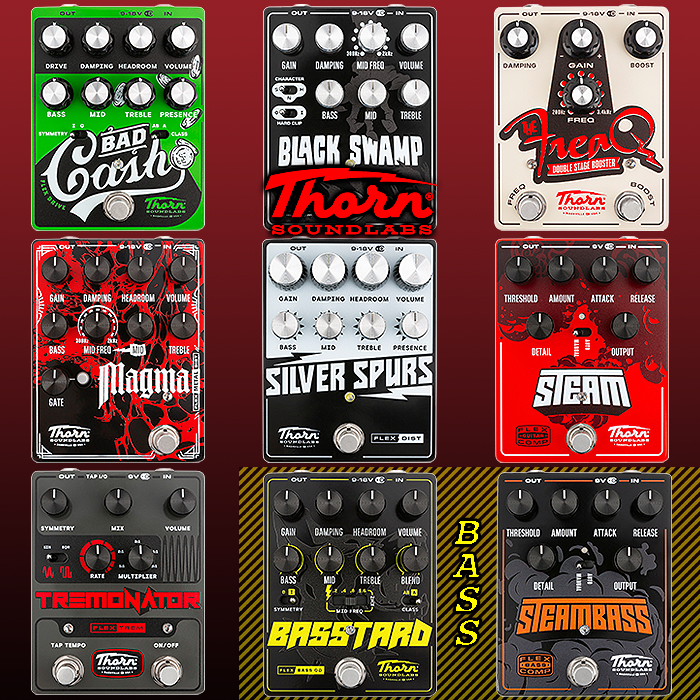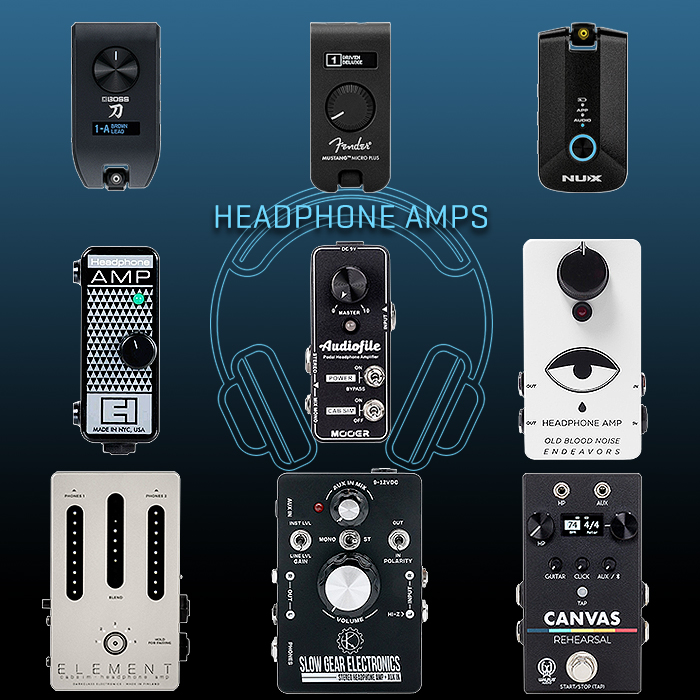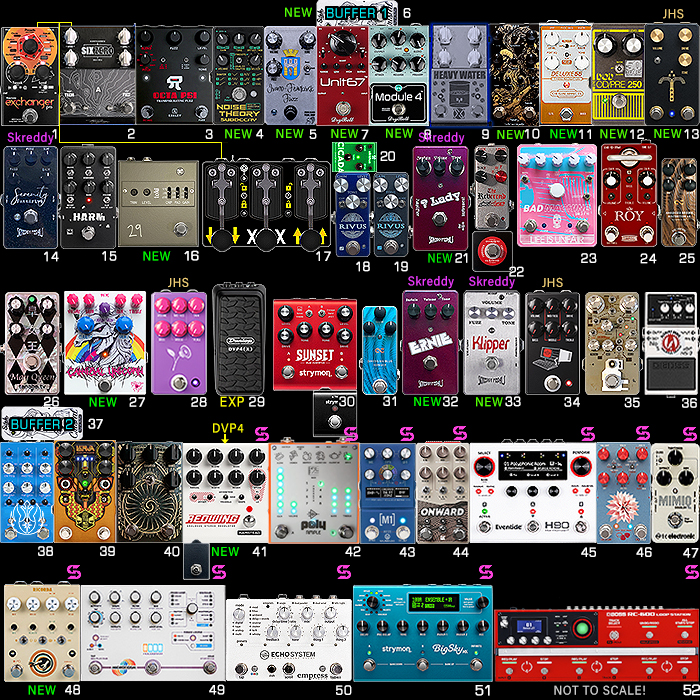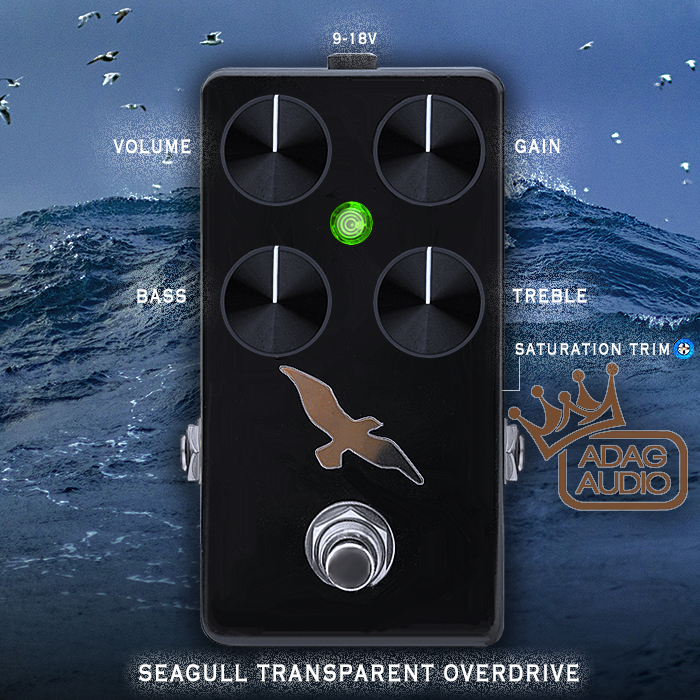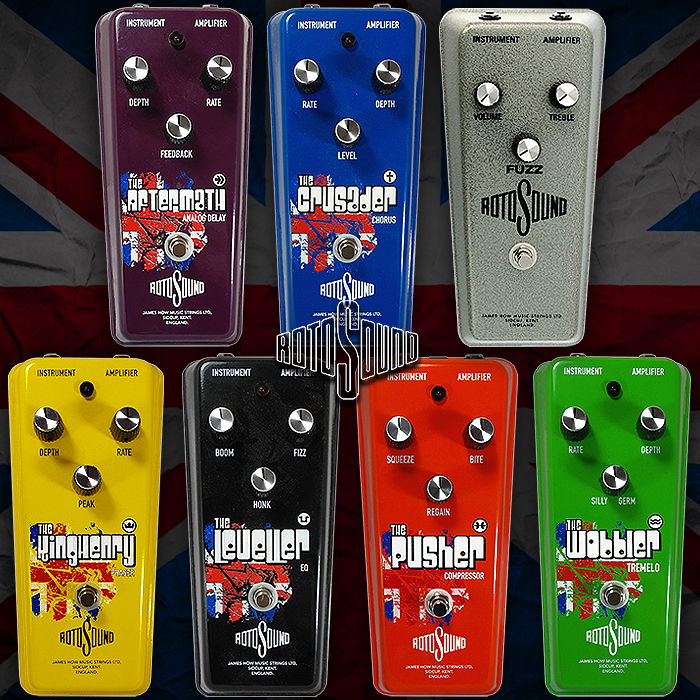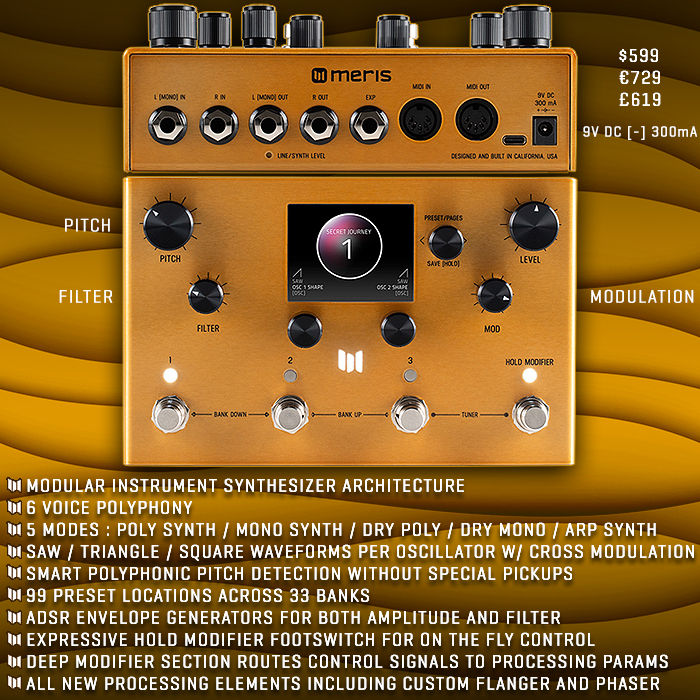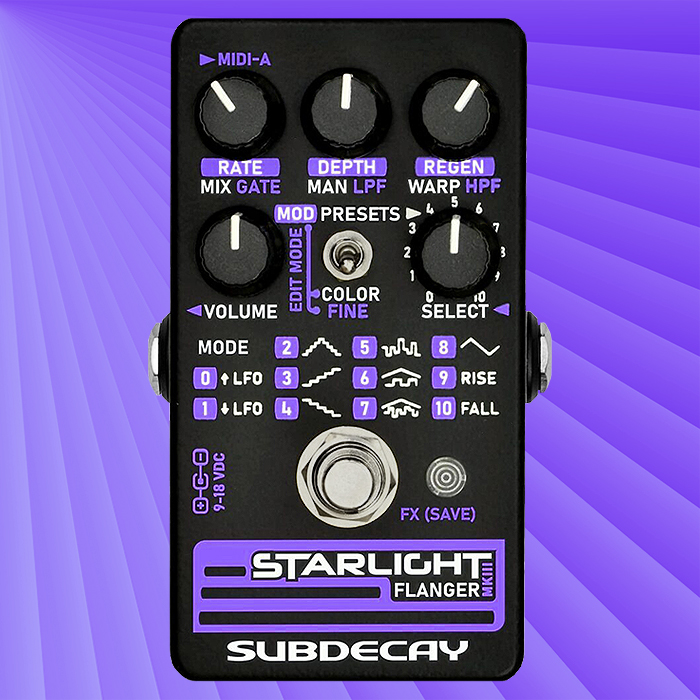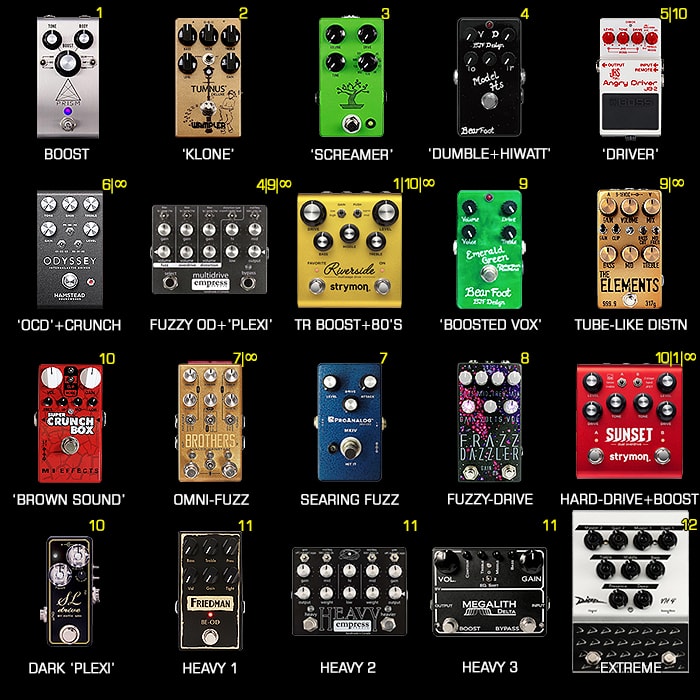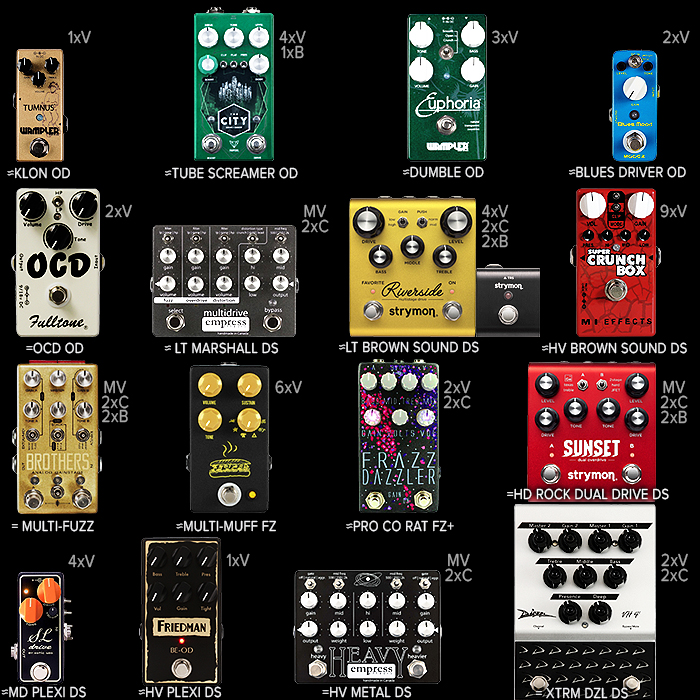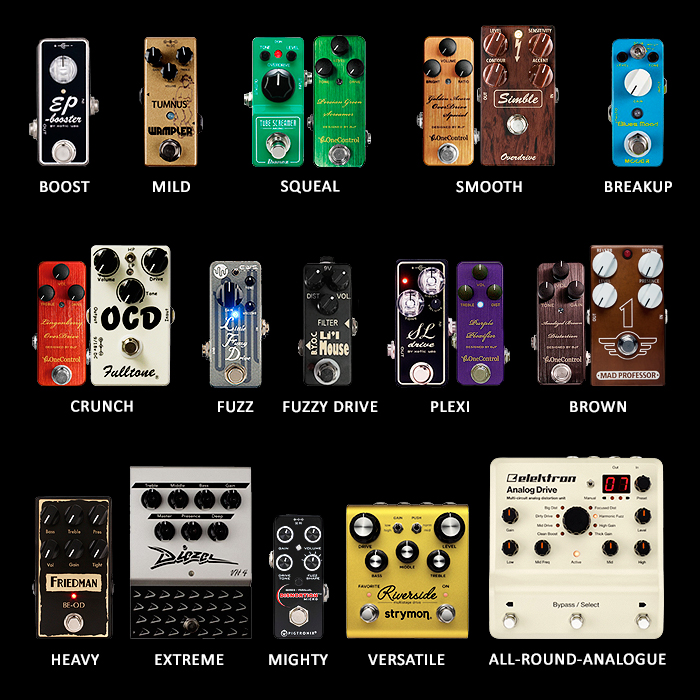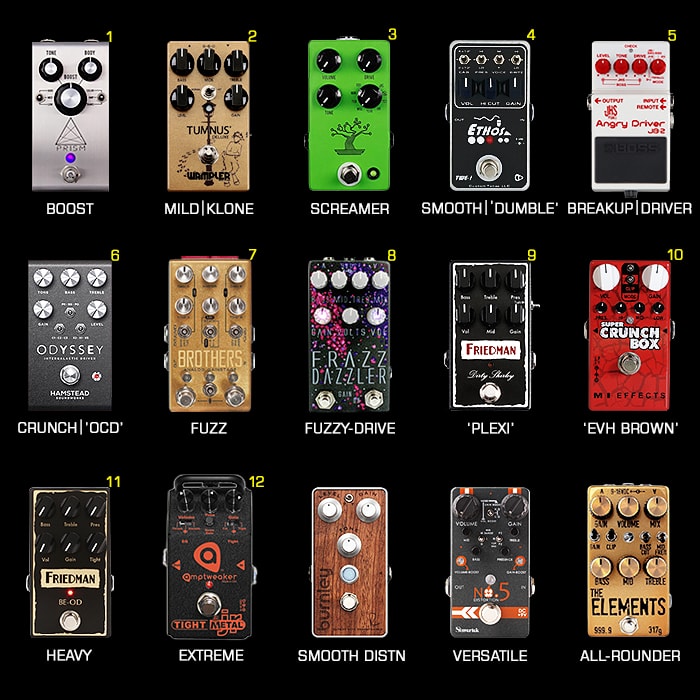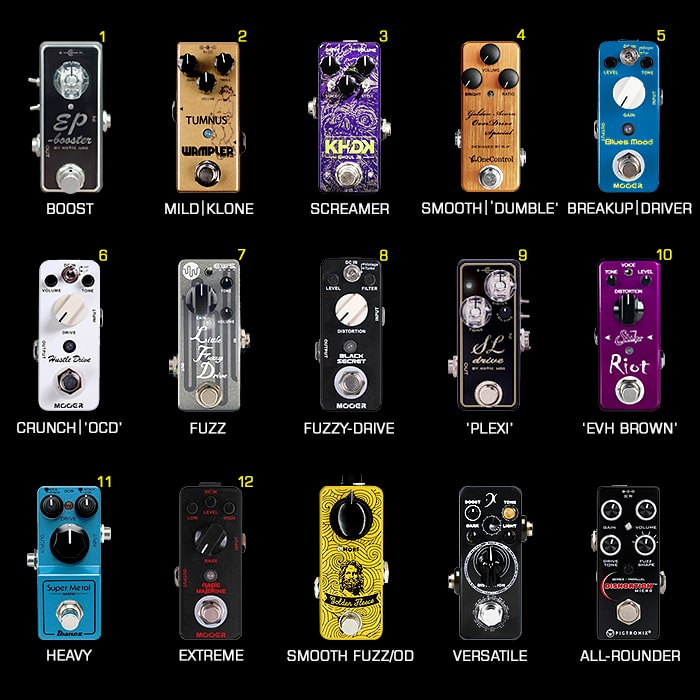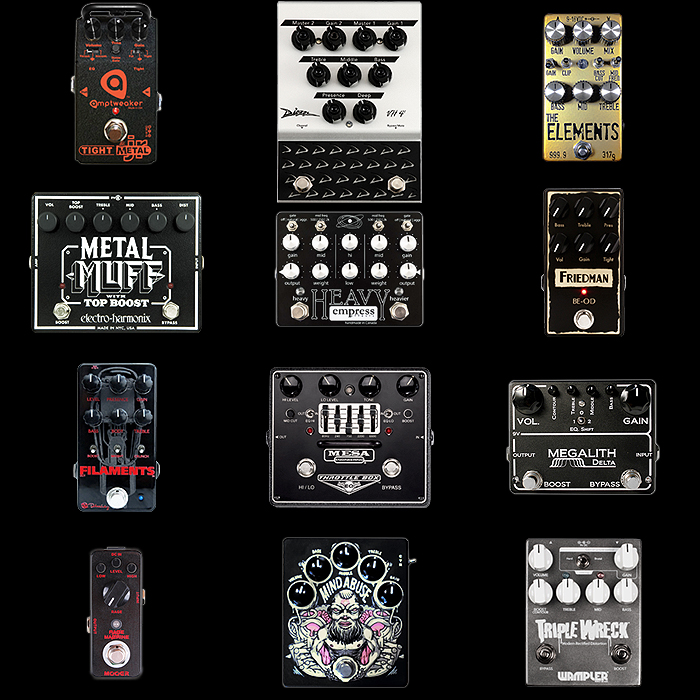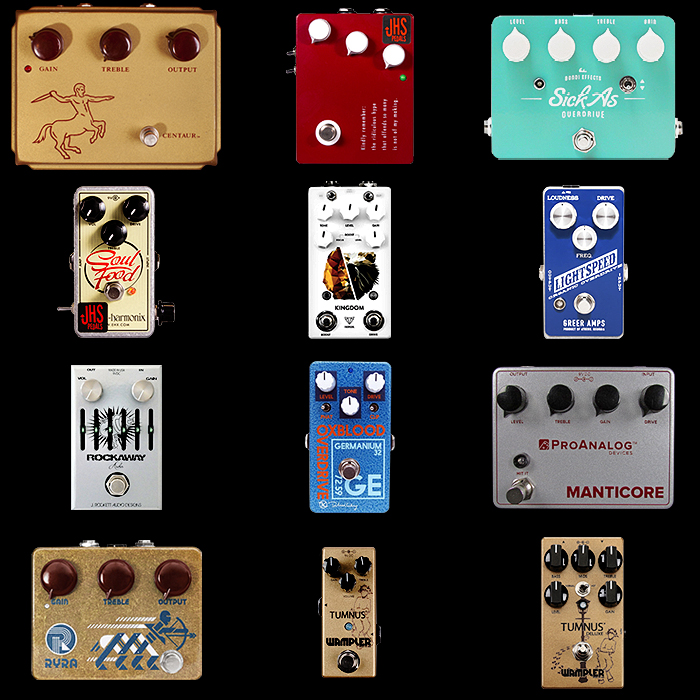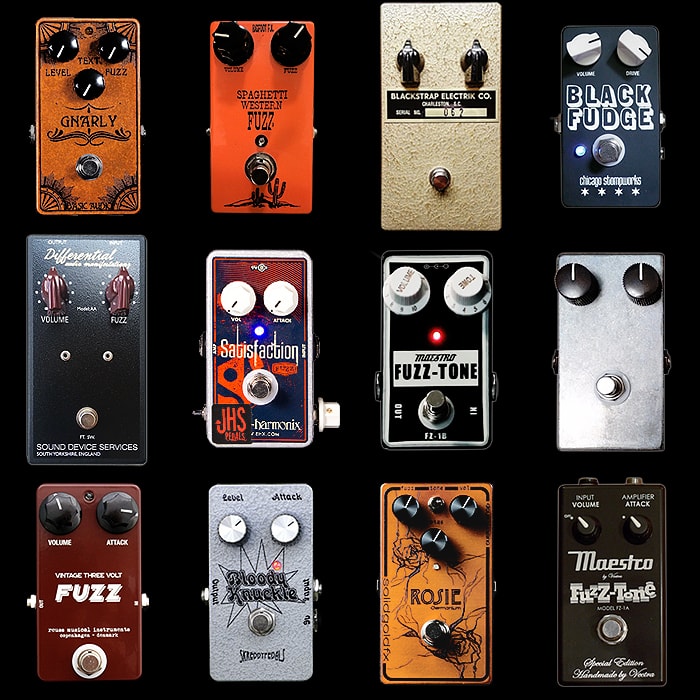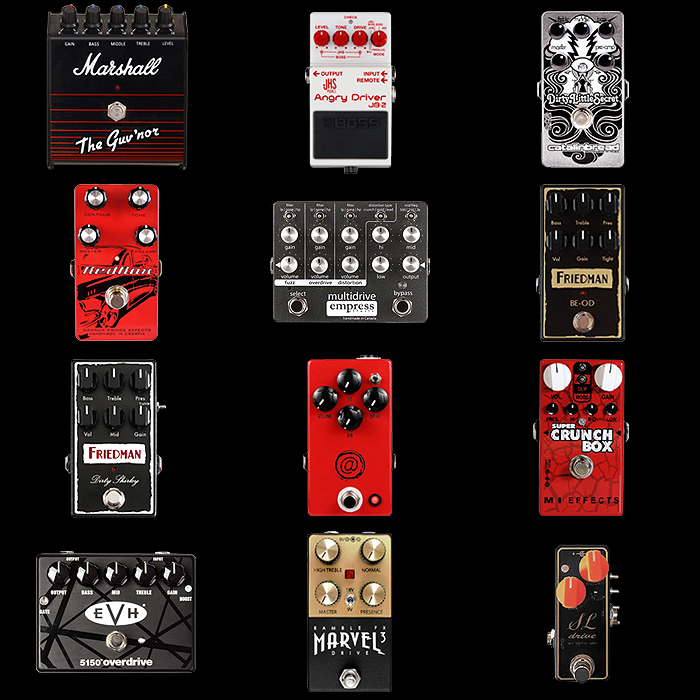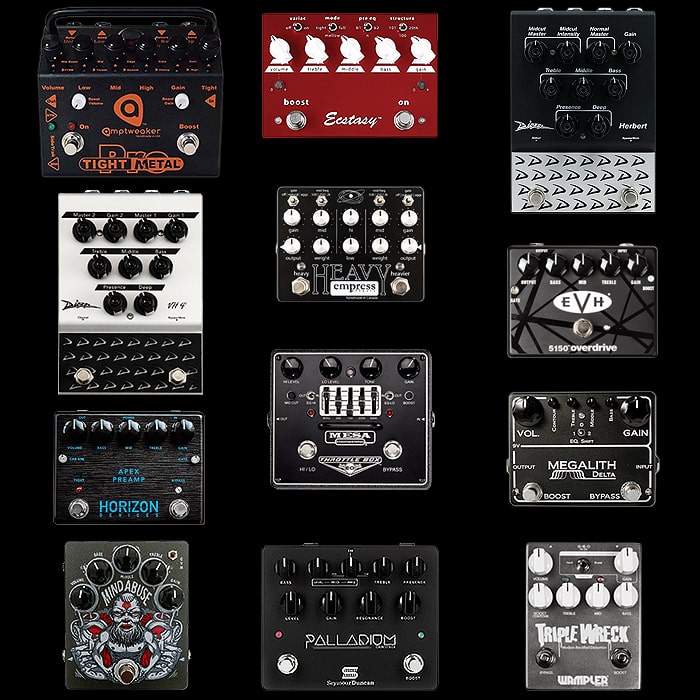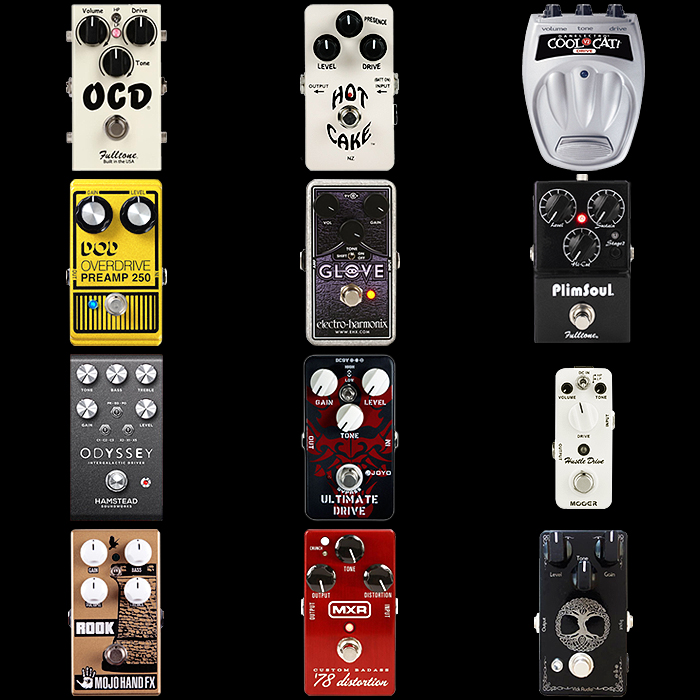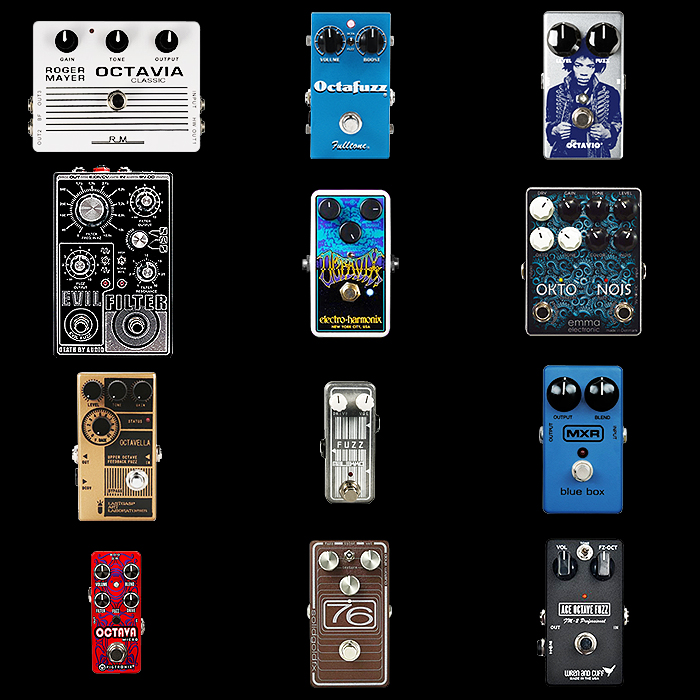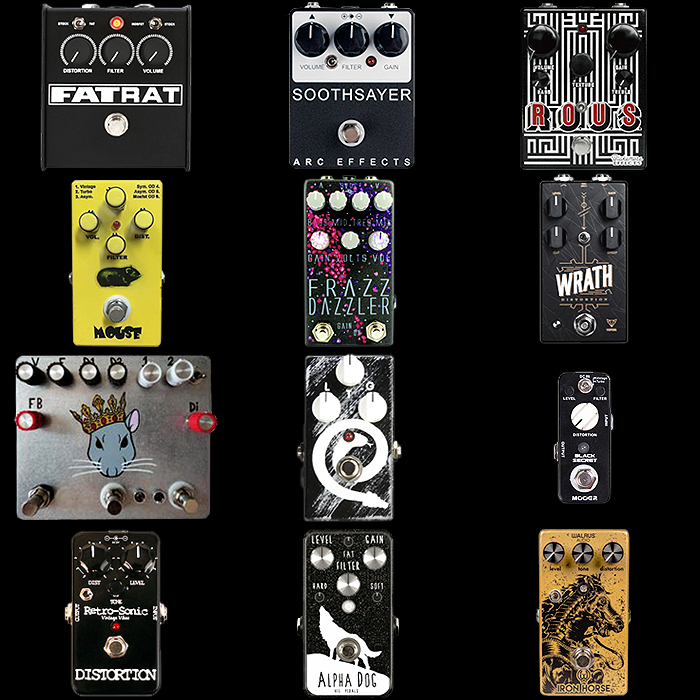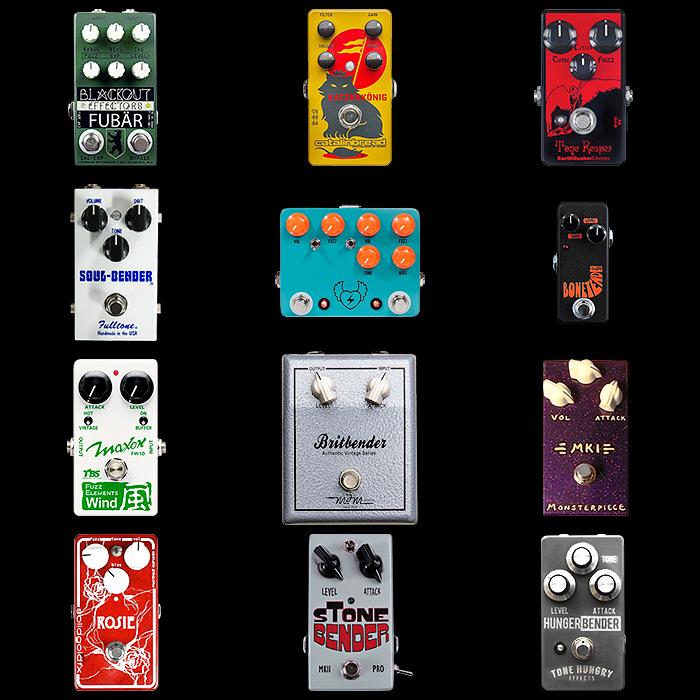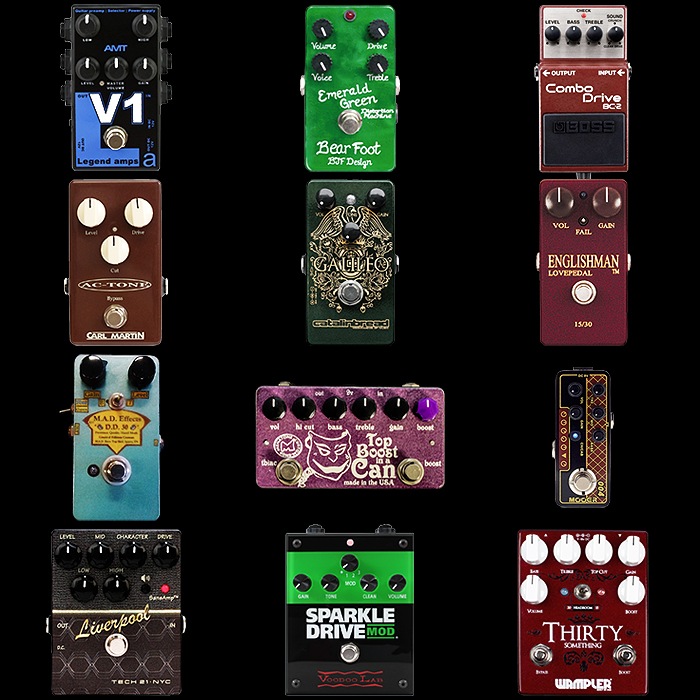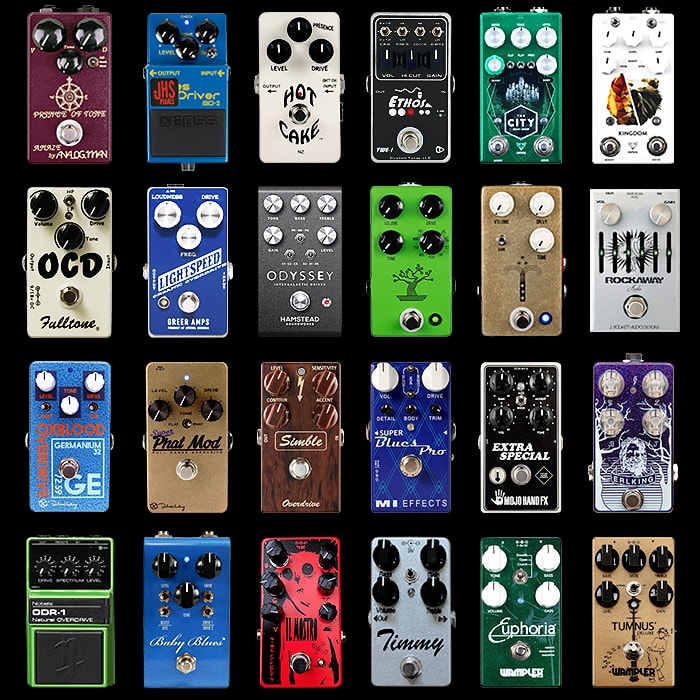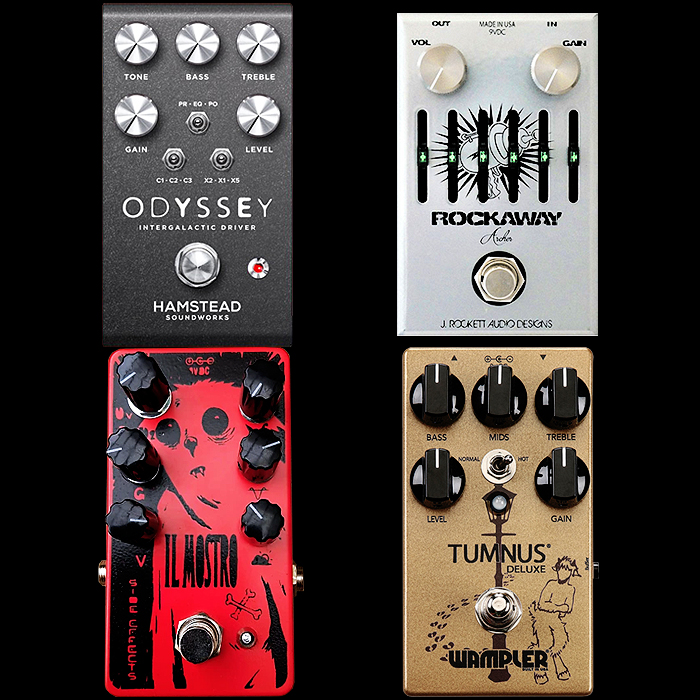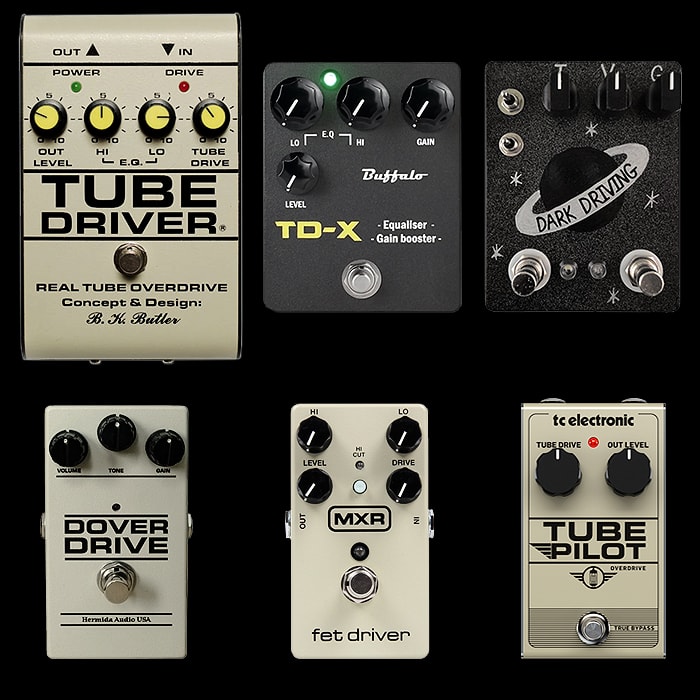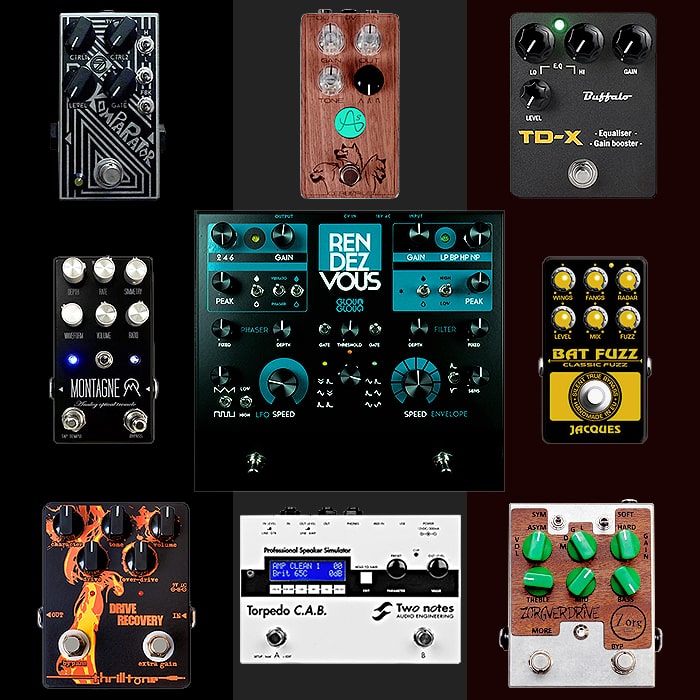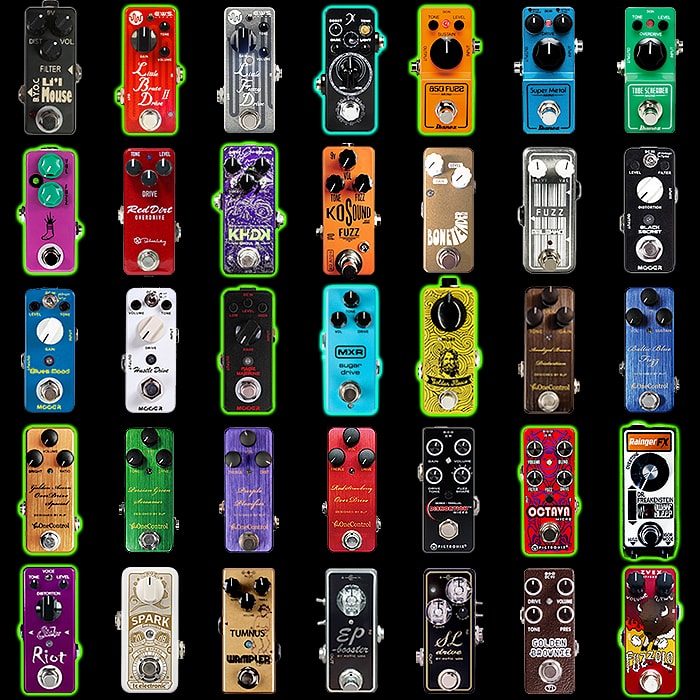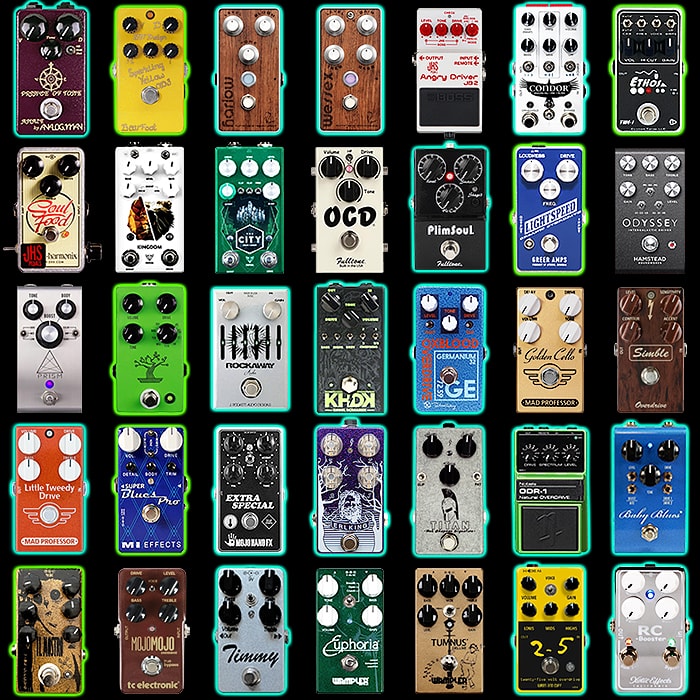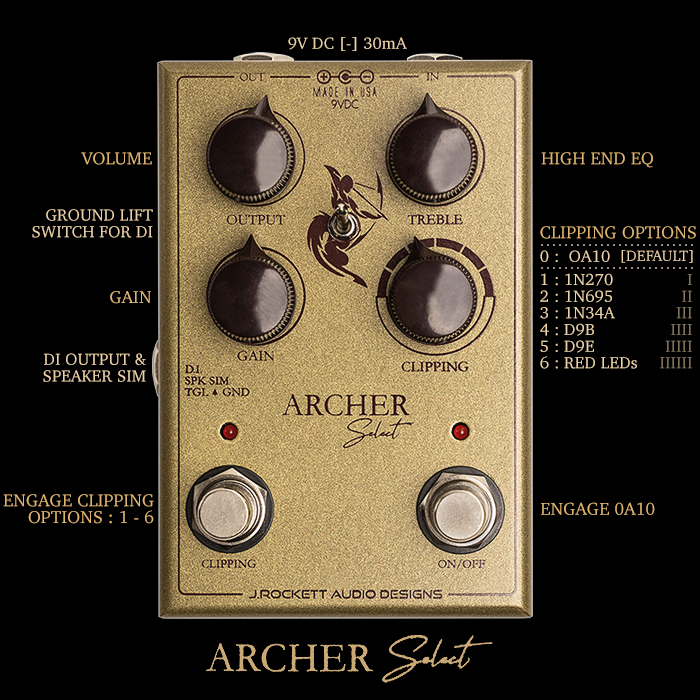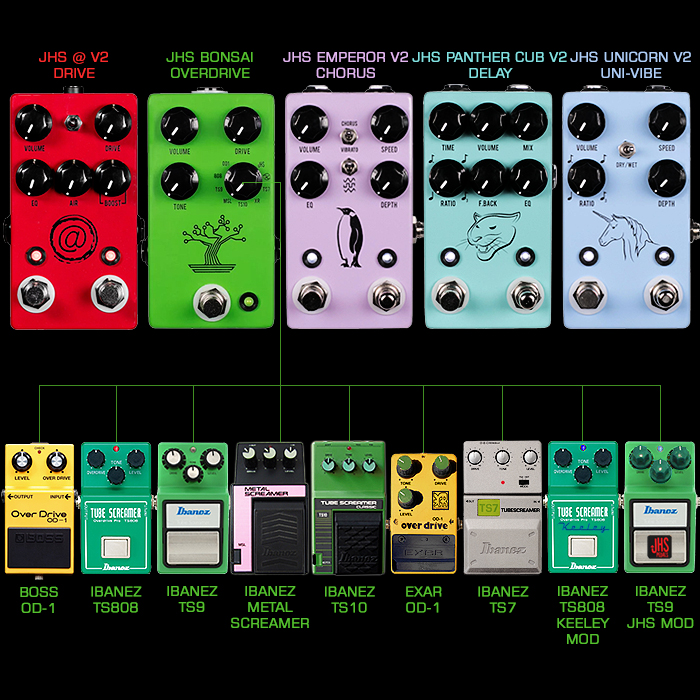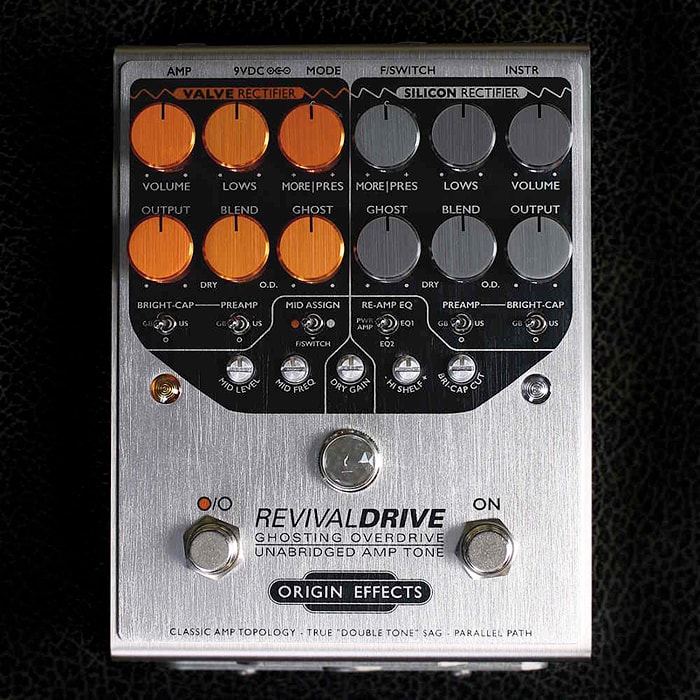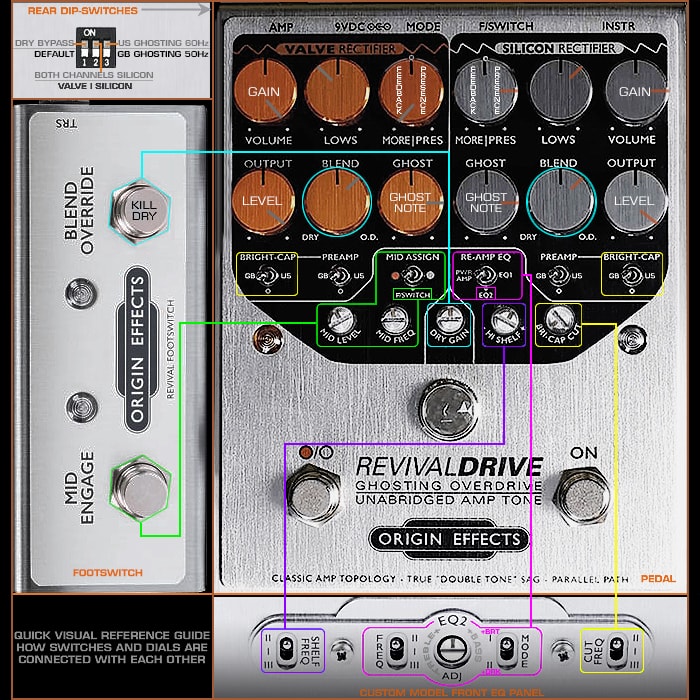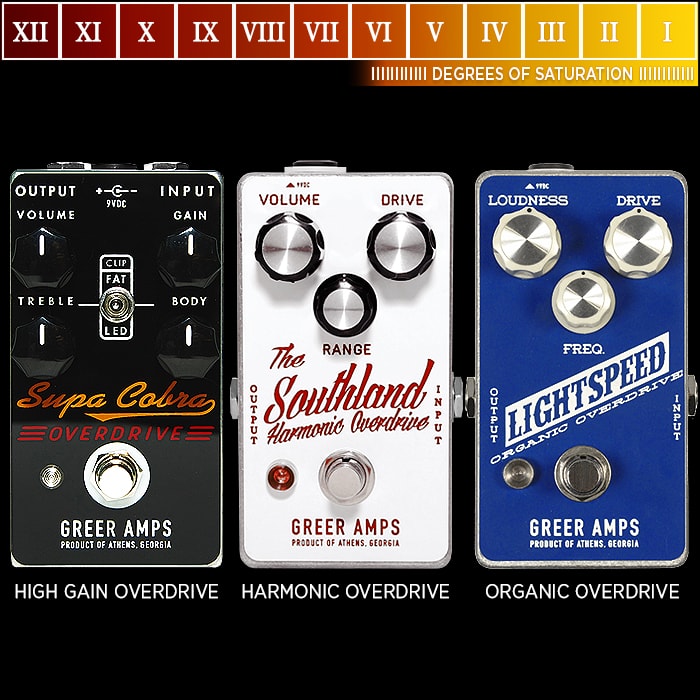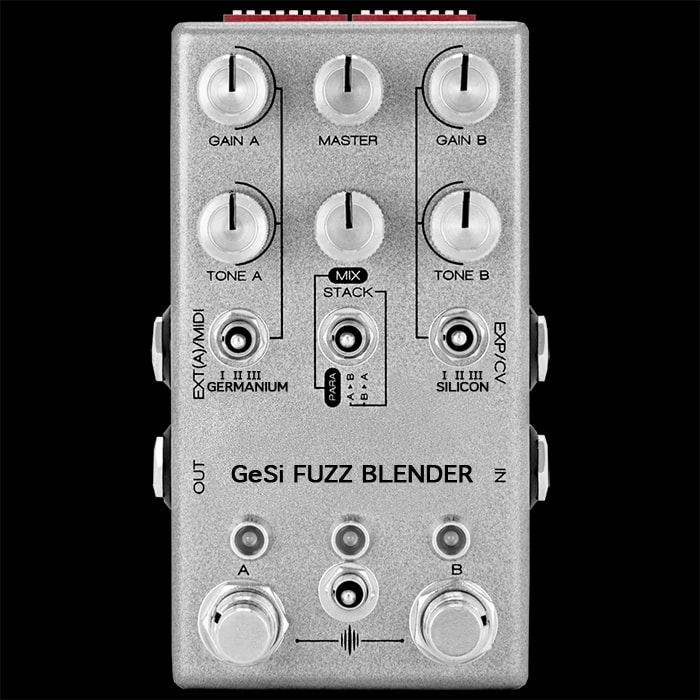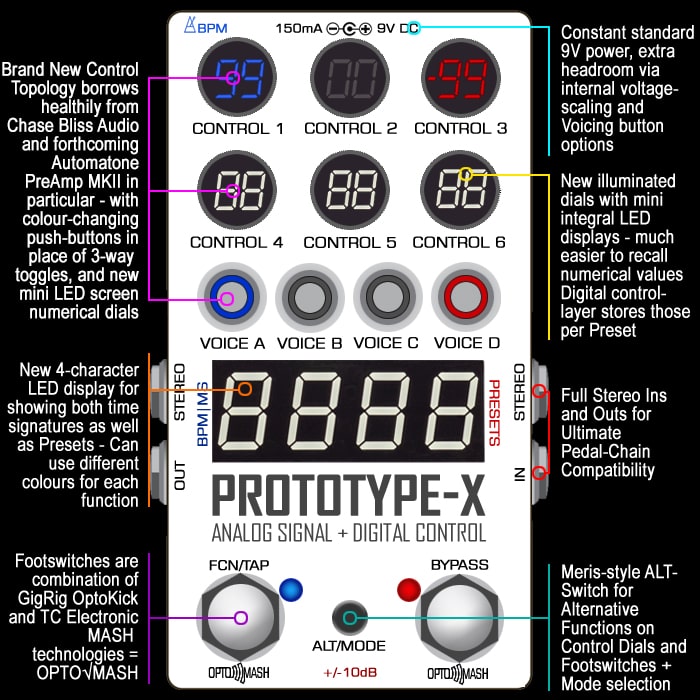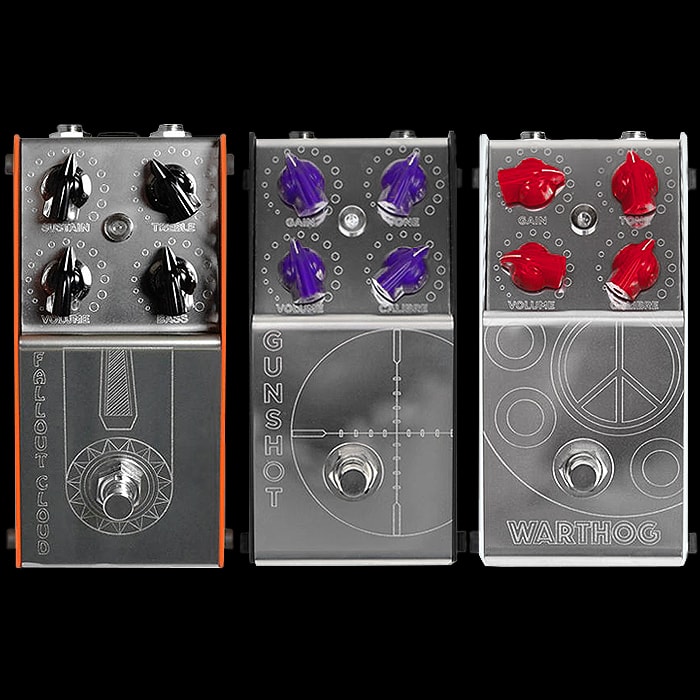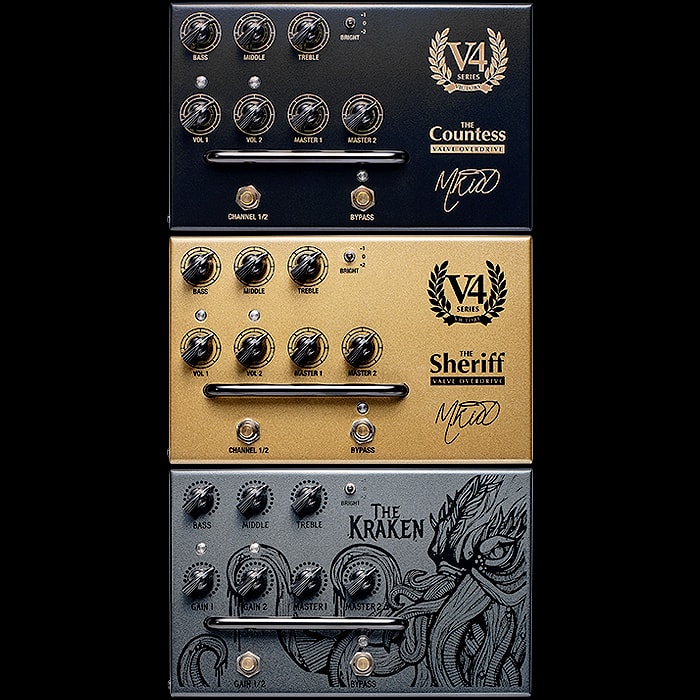Georgia Tech Students Create Innovative Modal Effects Modular Disruption Pedal
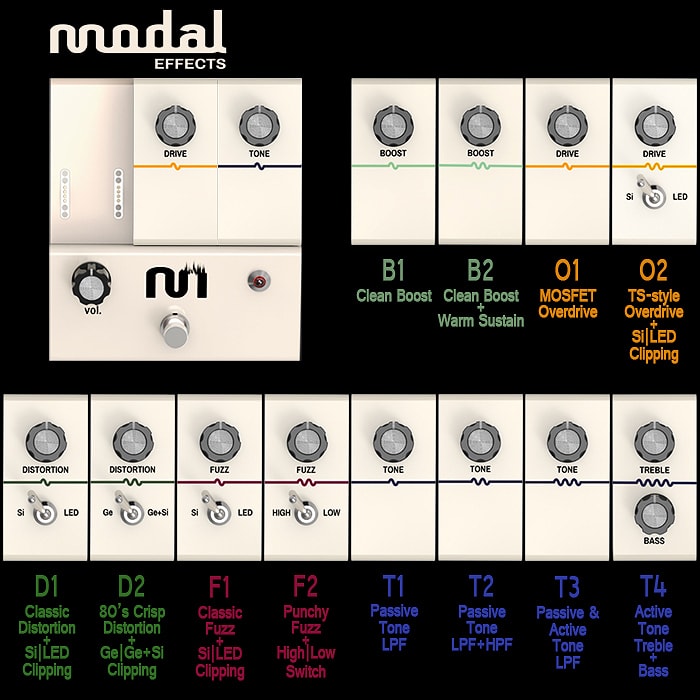
Following Elta Music Devices ’Console’ - a Modular Gaming Console style Multi-Effects Pedal which came with Joystick control and swappable modular cartridges, it seems that modular pedals are very much in vogue again. And while the Elta Console concentrates on various modulations, Georgia Tech / Modal Effects do a very different take on Boost, Overdrive, Fuzz, Distortion and Tone in an equally impressive magnetic snap-on enclosure.
The only similarity with these pedals is that the base pedals are both what I would call large enclosure format, and the Modal Effects Disruption base is quite chunky in the height department too.
My image above shows the main Disruption Base ($200/$275) which comes with the O1 Overdrive and T1 Tone Modules, plus a blank to fill the third empty space/slot. As indicated, there will be 12 different Modules at launch in the 5 categories detailed, with a two tier pricing structure of $36/$45 for the simpler Modules and $44/$55 for the more complex ones.
You can also buy various packs of modules, including the ’Master Pack’ which contains all the other 10 Modules in the range for £328/$410. The individual modules are about the size of slightly fatter but shorter mini pedals - their genius is that they snap on with magnets onto two flat contact plates. As you can see in the video below the changing and swapping around of modules is frictionless and far easier and longer-lasting potentially than the friction style snap-in type employed by Elta.
You can snap on any modules in any order - it’s the easiest plug and play system you ever saw, and the below video demo highlights the genius of this design. The pedal sounds great in the video demo, and as a working prototype the product design is superb. When I first saw this I wondered about the size of the device and noted the lack of 3-Band EQ I so like. The idea of these tone-capsules or modules obviously has physical limits for what you can fit inside such enclosures, and I wonder if there is potential for a 3-Band EQ or other slightly more complex modules - say with two voicing toggles.
As a concept though it is brilliantly conceived and executed and I rather like what I’ve seen and heard here. There’s plenty of room for expansion, and when more Modules arrive - almost infinite scope for experimentation - seeing as you can snap on the components in any order.
This is next level stuff - while the main downsides I see are the limiting factors of size of overall device, and confinement of the individual modules. Would be intriguing to see a roadmap of what more may come down the line. I think this is a great device for pedal builders learning about component order - although I don’t see the ability here to do parallel circuits - which could possibly be something for V2.
For V1 - I think this is really cool - a great learning and studio device for sure. As someone who regularly buys new pedals - it’s always a chore to slot them into the pedal chain - change all the different leads etc. With these easy snap-on Modules - the swapping and rotation of key effects really could not be easier. This very first version may not be a total flyer, but I’m in! I see they are already taking pre-orders, but I will wait until there is more than one prototype in the wild, and I have been able to watch a detailed technical review by a professional. As it is - it all looks very appealing indeed.
If you want the whole package in advance it’s going to cost you $528 on pre-order, and $685 when officially launched - which is a significant investment - you of course don’t need to buy all the modules at once - but surely that’s a great part of the fun to be had here. Each Module is colour-coordinated to type via a wave on the front and colour around the sides - the number of peaks on the waves indicate which module you are looking at - ranging currently from 1 to 4 per each category.
Modal Effects describes each module as follows:
- Boost B1 = A clean boost module that adds a huge amount of boost to your guitar signal, without coloring the tone
- Boost B2 = A clean boost module with warm sustain to add gain to the next module or to drive your amp
- Overdrive O1* = A versatile overdrive that uses MOSFETs to distort, giving it a crisp and unique sound
- Overdrive O2 = A modern take on a classic. This module is a very clean sounding overdrive with boosted mids
- Distortion D1 = This module is sharp on the attack with a powerful sustain. The definition of dirt
- Distortion D2 = A crisp distortion that is light on the compression. An ‘80s hard rock feel
- Fuzz F1 = A classic fuzz that offers a great balance of crunch with a rich and full sustain. Use as a distortion module at lower levels
- Fuzz F2 = A fuzz that can pack a punch - with High Gain and Low Gain Clipping
- Tone T1* = A passive low pass filter. Simple and pure
- Tone T2 = A combination of a low and high pass filter with a slight mid-scoop
- Tone T3 = Passive and active low pass filters work together to cut harsh overtones and boost the treble
- Tone T4 = An active filter with the ability to filter both bass and treble selectively
* - Overdrive O1 and Tone T1 come with default Disruption Base







